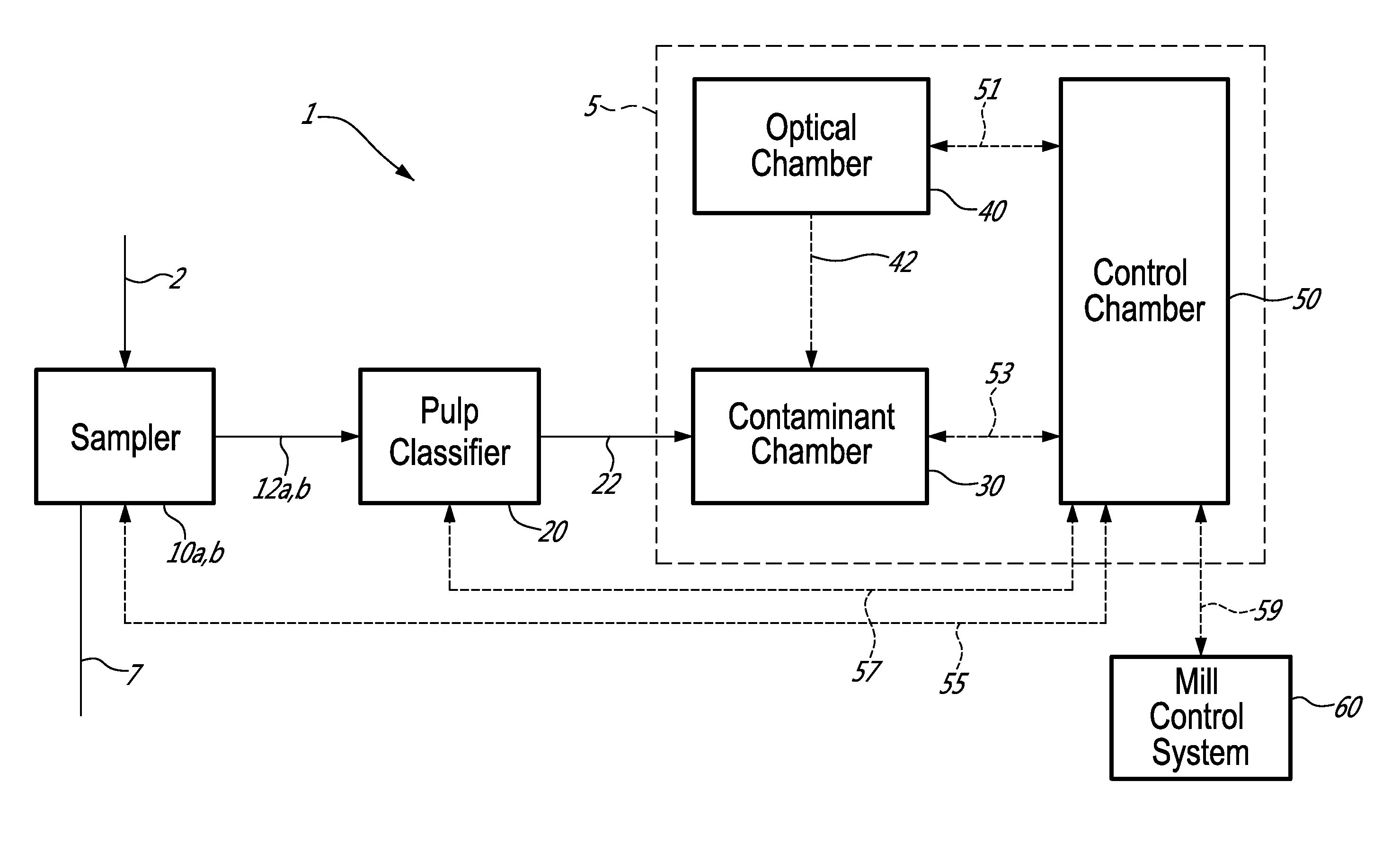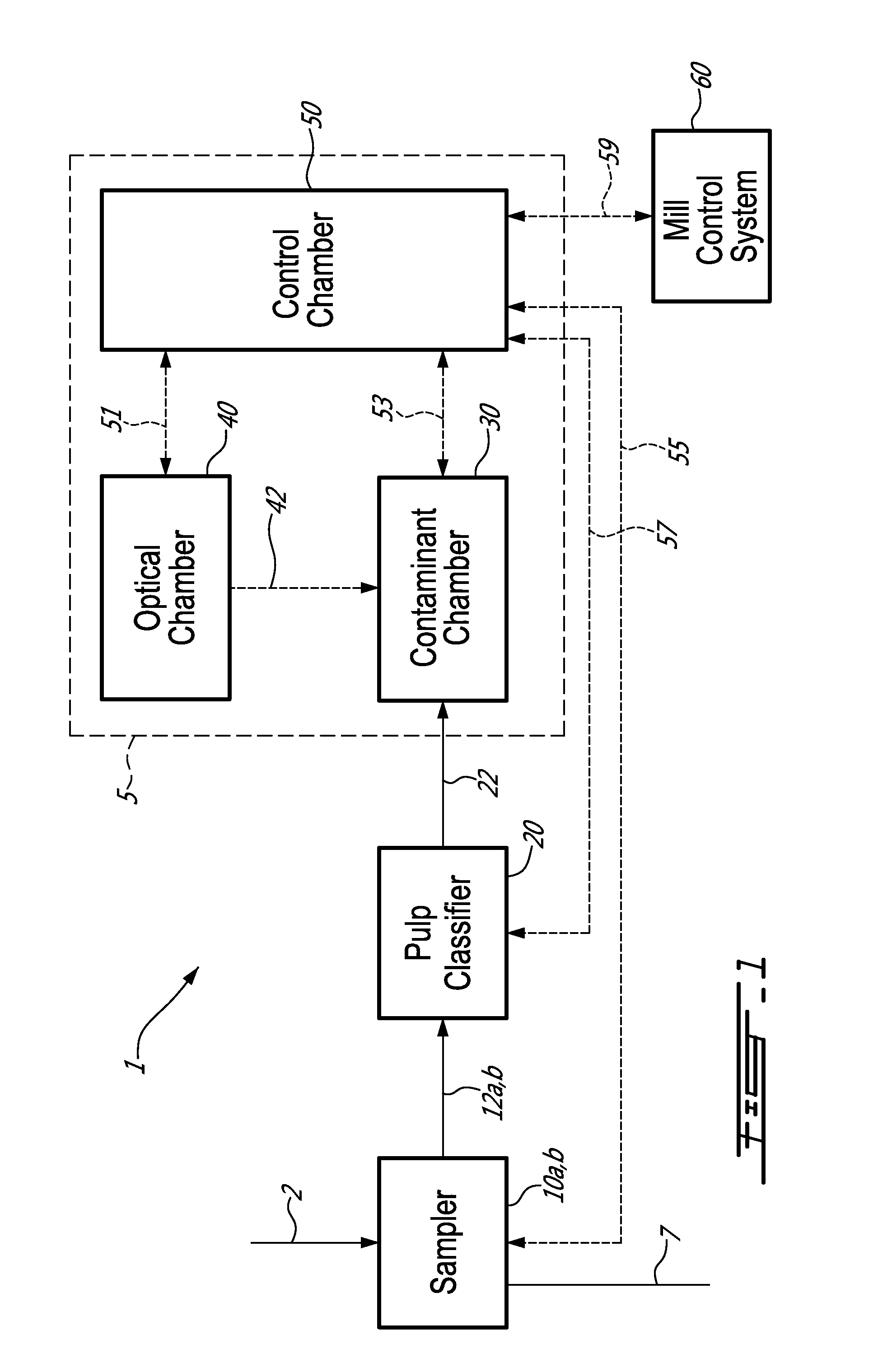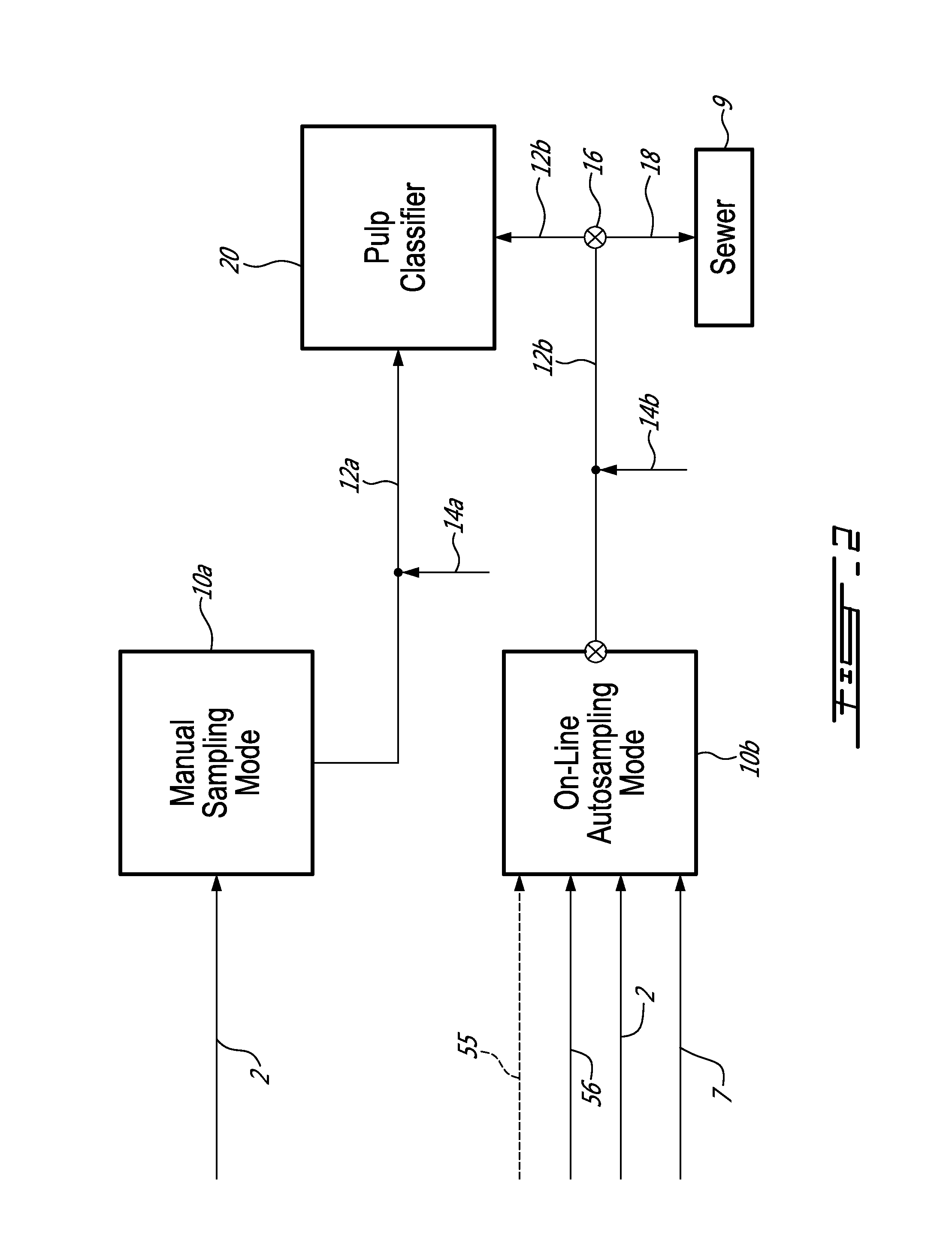On-line macrocontaminant analyser and method
- Summary
- Abstract
- Description
- Claims
- Application Information
AI Technical Summary
Benefits of technology
Problems solved by technology
Method used
Image
Examples
Embodiment Construction
[0042]Macrocontaminants are a minor component in an aqueous suspension whose principal components are long fibres and fine elements. Transport of the sample to the analyser can be done manually or automatically using commercially available pulp samplers.
[0043]In summary, the on-line automated analyser described identifies the type of macrocontaminants isolated from pulp or white water samples and measures their quantity, size and projected area by image analysis. In this unit, all actions are automated so that manual intervention is limited to calibration and maintenance procedures. In order to obtain a clear image for subsequent analysis, the macrocontaminants are first separated from the fibrous material and concentrated using a screening system with slot apertures of a 0.003″ to 0.006″. The analyser is designed to be either a stand-alone unit with an incorporated screening system or it can be retrofitted to an existing commercial pulp classifier. Pulp or white water streams are a...
PUM
 Login to View More
Login to View More Abstract
Description
Claims
Application Information
 Login to View More
Login to View More - R&D
- Intellectual Property
- Life Sciences
- Materials
- Tech Scout
- Unparalleled Data Quality
- Higher Quality Content
- 60% Fewer Hallucinations
Browse by: Latest US Patents, China's latest patents, Technical Efficacy Thesaurus, Application Domain, Technology Topic, Popular Technical Reports.
© 2025 PatSnap. All rights reserved.Legal|Privacy policy|Modern Slavery Act Transparency Statement|Sitemap|About US| Contact US: help@patsnap.com



